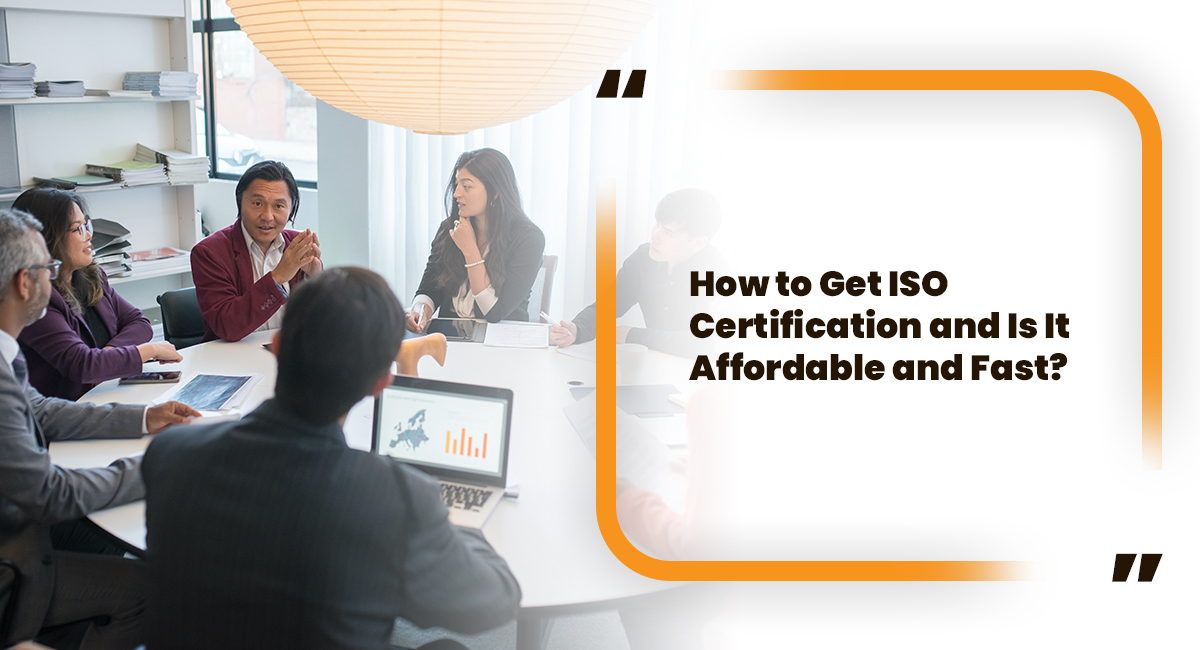
One of the most frequent online searches regarding ISO standards is how to get iso certified. Business sustainability through quality management, risk assessment, and continuity management is the reason for the growing demand or international acclamation. To build a strong brand and increase customer loyalty, ISO certifications are necessary. This mechanism is often considered a competitive advantage.
The process of meeting ISO standard’s expected performance objectives can be difficult, time-consuming, and exhausting. More than 30% of small companies fail in the audit process and must start the entire process over again. To avoid such financial loss, there are certain steps and facts one must acknowledge.
Often, companies demand fast accreditation. The streamlined process of ISO certification requires a particular timeframe. If adequate time is not given, the system might not perform as expected. Plus, such compromises often begin to see to compliance related legal penalties. If a system is unable to the meet regulatory requirements, the government often intervenes and charges steep penalties.
The following will outline the easiest and essential steps for hassle free accreditations.
Fundamental steps for ISO certification
Step 1 – Comprehending Clauses
Every ISO standard has certain clauses followed by specific requirements. From organisational context to resources and reviews, there are multiple aspects required for successful certification. The first step is identifying and understanding each of the required system modifications and corrective actions can be taken accordingly. To achieve 100% compliance, every stakeholder group must have a clear understanding regarding the clauses of this standard and subsequent requirements. Some of the general criteria for most ISO standards are:
Planning and Policies
Objectives
Resources
• Leadership
• Quality management
• Risk assessment
• Review and monitoring
• Documentation
• Continual improvement
Step 2 – Organisational Context and Scope of the Program
The second step is determining the context of the organisation and the scope of the entire program. The size, type, and extent of formalisation and centralisation are considered the basic context of a company. Without considering this vital aspect, no ISO standard can be implemented. Understanding the current position of your system regarding the context, corrective measures are required and must be clearly understood.
Step 3 – Gap Analysis and filling
The identification of the difference between the present system and the objectives is called a gap analysis. This is a crucial step that determines the overall success through inspection, evaluation, and review of the existing documents to determine the current flaws. According to these findings, several strategies are designed, and actions are enforced. From the top authority to the lower-level employee, every stakeholder’s engagement and proactive actions are necessary for optimising the result.
Step 4 – Audit
Before a third-party certification body conducts an audit, an internal analysis is done to analyse conformance to the regulatory norms. An internal audit is an independent objective-driven evaluation that adds value to your operations. To check the progress of your management system after the gap filling, it needs monitoring and review. The internal audit is the final analysis that offers opportunities for rectification.
Step 5 – Readiness Review (Optional)
To ensure your system has achieved 100% compliance, most companies now conduct a readiness detection assessment. It is a brief process that observes and the provides a statement on whether the system can provide the desired outcome or not.
The entire process can be done within two or three months under professional observation. Professional experts now offer tailored solutions that are affordable. Their experience and market knowledge are necessary to complete all the intricate steps of gap analysis and internal audit. If your system complies to all the clauses, you can even achieve accreditation in less than 30 days also.
Connect with Compliancehelp to get the answer as to “how to get iso certified.” Their consultants are experienced and certified experts who specialise in different aspects of ISO certifications. Allow their professional guidance to conduct all the phases discussed above and streamline operations. To know more, click here!

Get connected with us on social networks!